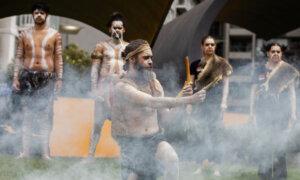Indigenous Suicide Rate in Victoria is Three Times Higher, with over Half of Victims Under 35
According to the most recent report, the impact is particularly significant among younger generations, with a disproportionately high rate of suicides.
In Victoria, suicide rates among Aboriginal and Torres Strait Islander people have risen to almost three times the rate of non-Indigenous Australians, resulting in 27 suicides in 2024.
This increase, compared to 22 suicides in 2023 and 19 in 2022, highlights the ongoing mental health crisis within Indigenous communities.
Unfortunately, the effect is most evident in younger generations where suicides are significantly elevated, as outlined in the Coroners Court of Victoria’s report released on March 5th.
Impact on Age Groups: Loss of Young Lives
The report emphasizes the disproportionate impact of suicide on younger Aboriginal and Torres Strait Islander individuals.
Alarmingly, 56.6 percent of Aboriginal and Torres Strait Islander suicides involved individuals under 35, in contrast to 30.2 percent among non-Indigenous suicides.
For males, 33 percent of suicides were in the 25-34 age group, with an additional 20.5 percent in the 35-44 and 45-54 ranges.
Among females, 38.2 percent were in the 18-24 age group, and 35.3 percent in the 25-34 age group.
The average age of male Aboriginal and Torres Strait Islander suicide victims was 37, in comparison to 46.9 for non-Indigenous males; and 29.6 for females, compared to 45.7 for non-Indigenous females.
Impact on Regional Areas: Hardest Hit
The report also unveiled troubling findings regarding the geographical distribution of suicides.
Between 2020 and 2024, suicides among Indigenous individuals occurred more frequently in regional areas, with 54.9 percent of cases reported outside metropolitan Melbourne.
This contrasts with the suicide rate among non-Indigenous individuals, where 66 percent of suicides happened in the metropolitan areas of Melbourne.
These findings emphasize the unique challenges faced by Indigenous communities residing in regional and rural areas, such as limited access to mental health services, social isolation, and exposure to various stressors that can exacerbate mental health issues.
Underlying Stressors Behind the Numbers
An examination of contributing factors to suicides between 2020 and 2023 revealed a complex interplay of stressors impacting Indigenous individuals.
These stressors include mental health issues, interpersonal challenges, substance use, exposure to family violence, and involvement with the justice system.
State Coroner Judge John Cain expressed deep concern about the findings.
“It is crucial to ensure adequate supports are in place to reduce suicides within these communities.”
A Nationwide Crisis: The Bigger Picture
The figures from Victoria mirror a broader trend seen across Australia.
A report from the Australian Institute of Health and Welfare released in February highlighted that the suicide rate among Indigenous people is approximately two and a half times higher than that of non-Indigenous Australians.
In specific states and territories, the age-standardized suicide rate for First Nations people ranged from 28.1 deaths per 100,000 in Queensland to 38.1 per 100,000 in Western Australia.
Among males, the suicide rate is nearly three times higher than among females within the same community.
In 2020, all Australian governments, in conjunction with the Coalition of Aboriginal and Torres Strait Islander Peak Organizations, signed the National Agreement on Closing the Gap.
This agreement includes targets to reduce the suicide rate among First Nations individuals to zero, although progress has been slow.
The Path Forward: Culturally Relevant Solutions
To address this crisis, experts emphasize the necessity for culturally relevant, community-driven solutions.
Professor Pat Dudgeon, director of The Center of Best Practice in Aboriginal and Torres Strait Islander Suicide Prevention at the University of Western Australia, stated that the rising suicide rates among Indigenous peoples are indicative of the effects of colonization, intergenerational trauma, and social disadvantages.
Dudgeon advocates for suicide prevention strategies that are “culturally informed” and address the broader aspects of social and emotional well-being.
“Empowering Aboriginal and Torres Strait Islander communities to lead their mental health initiatives is vital,” she commented.
“To reverse this trend, we need culturally grounded solutions that empower our communities and enhance their connection to culture and Country.”
Programs like the National Aboriginal Community Controlled Health Organization’s Culture Care Connect have the potential to assist, but Dudgeon insists that sustained government backing and systemic changes are essential for these initiatives to be effective.
Gobbo (Wardandi & Bibbulmun), manager of the Yirramboi Murrup Unit (Coroners Aboriginal Engagement Unit), also stressed the importance of collaboration in suicide prevention efforts.
“It is crucial for the community to have accurate and up-to-date information about suicide so we can collaborate in creating targeted, culturally safe support for First Nations people in Victoria,” Gobbo emphasized.





